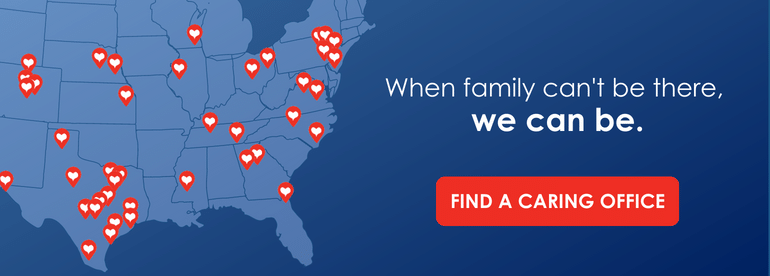So much financial advice is about building up a nest egg for retirement, but it seems like so little is about helping you manage that money — whether you're retiring early or on time. Even if you planned carefully for your retirement years, you can't just put your finances on autopilot when you retire, and you'll still need to keep track of your spending, investments, and income.
Managing your money well in retirement is important if you want your savings to last you through your golden years without forcing you to cut back or even come out of retirement. Here are 5 simple ways to increase your retirement fund after retirement.
1. Keep Your Finances In Check
Like most retirees, you may feel financially secure but still worry about the stock market, running out of money, or the cost of getting sick. Review your account balances and sources of income to find out how much money you have and if it fits your retirement income plan and strategy for taking money out.
Figure out the total assets you will spend next year and sources. Decide what age you'll be getting Social Security if you haven’t already. Review your taxes and expenses, and if you need to, make changes to your income plan. Look over your plans for care in the long term.
You should rethink your overall investment plan if there are big changes in the market or your life. Review your taxes and expenses, and if you need to, make changes to your income plan. Check your asset allocation and investments to ensure they align with your goals. Review your finances in case your spouse or significant other dies. Think about how much equity you have in your home and how to use it.
2. Make Smart Investment Decisions
When it comes to their investment portfolios, retirees and young investors in the accumulation phase have very different goals, risk tolerances, and time horizons. For retirees, the most important thing is ensuring they have a reliable perpetual withdrawal rate for their income needs. Keeping the principal safe is also important since market corrections and bear markets can be hazardous for retirees who depend on their portfolios for living expenses.
Looking honestly at your spending habits is the easiest way to ensure you don't run out of money in retirement. Knowing how much you need to spend won't have to take too much money out of your retirement investment portfolio.
The risk of having too much of one asset, stock, sector, or geographical area in their portfolios is something that retirees should try to avoid. Instead, put money into various assets, such as stocks, bonds, cash, and other assets. Different degrees of correlation between these assets make it less likely that you will all go down simultaneously, making the portfolio less volatile. At least once a year, you should look at your asset allocation and rebalance it to ensure it fits your risk tolerance and time horizon. This means you have to sell assets that have done better than expected and buy assets that have done worse than expected to get your asset allocation back to where it should be.
In a market downturn, cash is the best way to protect yourself. Inflation makes cash lose value but keeps its value during a bear market. Having a good amount of cash in your retirement portfolio can help you have something to fall back on if other investments go down.
3. Withdraw Money From Taxable Accounts
It's important to get the most out of your retirement accounts that help you save money on taxes. The better off you'll be, the longer you let them grow without having to pay taxes on the gains. So, it is wiser to take money out of your taxable accounts first, then your tax-deferred accounts, so that your tax-deferred accounts can keep growing.
Given the extra value of tax-deferred retirement accounts and how hard it is to access them, it makes sense to pay for your early retirement with money from taxable accounts first. Also, some penalties come with taking money out of tax-deferred before retirement age. Even when it's time to take money out of your retirement account, use taxable funds first if you can.
RELATED CONTENT: 5 Tax Preparation Tips for Seniors
4. Get Rid Of High-interest Debts As Soon As Possible
When you don't have a steady source of income, it's hard to deal with debt, and it can ruin your retirement plans. After you retire, the costs of medical care tend to go up, and it can be hard to pay for them when your income seems to be decreasing. Because of this, it gets challenging if debt keeps building up.
Working with a financial professional can help you make a plan for your future if you're worried that you won't be able to retire on time or if you're having trouble paying off your debts. A financial advisor can also help you understand your current financial situation and use various creative tools to help you plan for the future. For example, if you can't pay back a payday loan, a professional could help you settle the payday loan debt for less than what you owe.
A debt consolidation program can help you combine your credit card payments into one. You usually make one payment to the program, which sends the money to your creditors. This can be an excellent way to pay off credit card debts with high-interest rates. Your program's monthly payment should be less than what it would be if you paid for everything separately. That also means more payment goes toward paying off your other debts.
Debt consolidation programs work with your creditors to help lower your interest rates and eliminate fees like late fees, but neither of these things is guaranteed.
RELATED CONTENT: Financial Gurus Give 12 Investment Strategies for Retirement
5. Make Use Of The 3-bucket Strategy
With the 3-bucket strategy, your investments are split into three groups: short-term, medium-term, and long-term.
- Most short-term investments involve keeping enough money for 1 to 3 years in cash, such as Social Security benefits and pension income, not affected by market changes.
- Most mid-term investments are fixed-income assets like bonds and certificates of deposit (CDs), which may provide some income and have less risk than other investments.
- Long-term investments tend to be put aggressively into higher-risk areas like stocks to give retirees a chance for their investments to grow over time.
This strategy protects you from the risk of living longer than you planned. If you run out of your short-term bucket, the other buckets can cover you financially. Your assets in the third bucket will keep growing no matter how long you live after you retire. You can have a comfortable retirement without worrying about medical bills, changing your lifestyle, or spending less.
The Bottom Line
Whether or not you use these approaches, it is prudent to approach retirement with a well-thought-out plan. If you know how you react when the market goes in different directions, you'll be less likely to do something rash that could hurt your long-term plan. In the end, a good plan will give you the peace of mind you need to live the retirement you've always dreamed of instead of worrying about things you can't change.
About the Author
Lyle Solomon has extensive legal experience, in-depth knowledge, and experience in consumer finance and writing. He has been a member of the California State Bar since 2003. He graduated from the University of the Pacific's McGeorge School of Law in Sacramento, California, in 1998 and currently works for the Oak View Law Group in California as a principal attorney.


